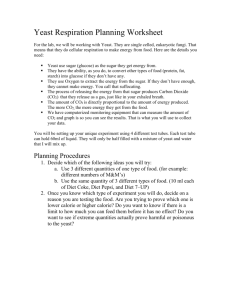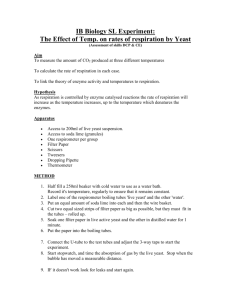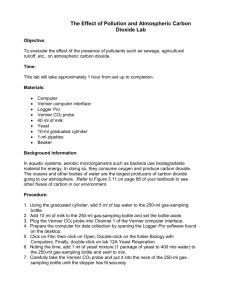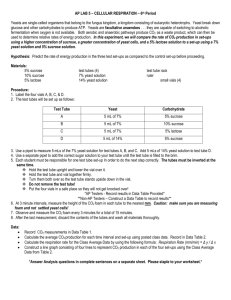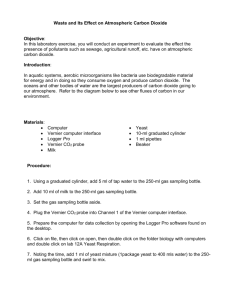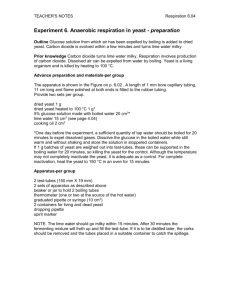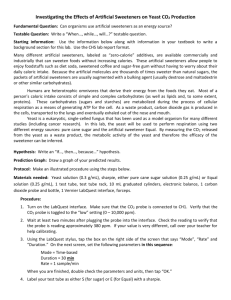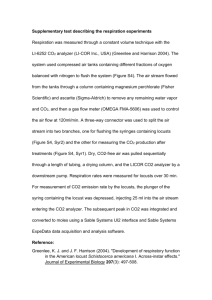VERNIER PROBES PURDUE UNIVERSITY INSTRUMENT VAN
advertisement
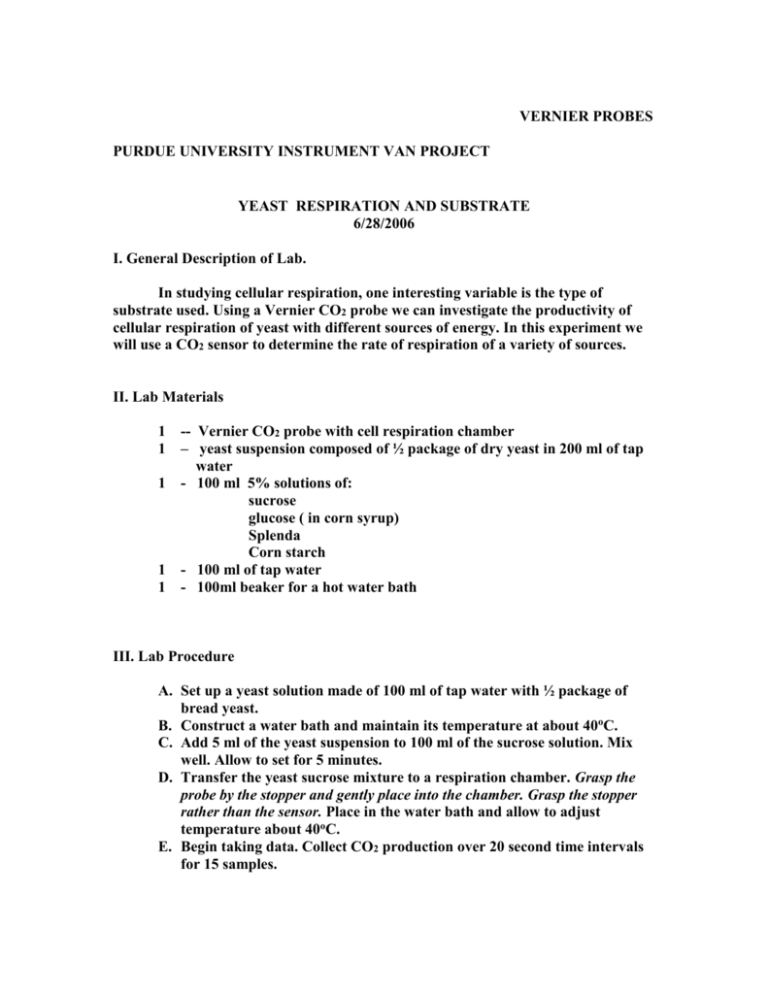
VERNIER PROBES PURDUE UNIVERSITY INSTRUMENT VAN PROJECT YEAST RESPIRATION AND SUBSTRATE 6/28/2006 I. General Description of Lab. In studying cellular respiration, one interesting variable is the type of substrate used. Using a Vernier CO2 probe we can investigate the productivity of cellular respiration of yeast with different sources of energy. In this experiment we will use a CO2 sensor to determine the rate of respiration of a variety of sources. II. Lab Materials 1 1 1 1 1 -- Vernier CO2 probe with cell respiration chamber – yeast suspension composed of ½ package of dry yeast in 200 ml of tap water - 100 ml 5% solutions of: sucrose glucose ( in corn syrup) Splenda Corn starch - 100 ml of tap water - 100ml beaker for a hot water bath III. Lab Procedure A. Set up a yeast solution made of 100 ml of tap water with ½ package of bread yeast. B. Construct a water bath and maintain its temperature at about 40oC. C. Add 5 ml of the yeast suspension to 100 ml of the sucrose solution. Mix well. Allow to set for 5 minutes. D. Transfer the yeast sucrose mixture to a respiration chamber. Grasp the probe by the stopper and gently place into the chamber. Grasp the stopper rather than the sensor. Place in the water bath and allow to adjust temperature about 40oC. E. Begin taking data. Collect CO2 production over 20 second time intervals for 15 samples. F. Repeat the above sampling procedure for each of the other substrates, including tap water. G. Construct 5 separate graphs showing CO2 levels versus time. H. For each graph determine the slope of the straight line produced or perform a linear regression. Determine the rate of CO2 production per second for each graph. I. Construct a graph showing the temperature on the x-axis and the rate of CO2 production on the y-axis. IV. Questions and Discussion A. Which substrate produced the highest rate of CO2 productivity. B. Based on your results, do yeast cells utilize all substrates equally? Explain. C. Predict the possible results you may have obtained if the water bath was set at 20oC. Explain. D. Predict the possible results you may have obtained if the water bath was increased to a temperature of 60oC. Explain. E. Predict the possible results you may have obtained if the water bath was increased to a boiling temperature of 100oC. Explain.
